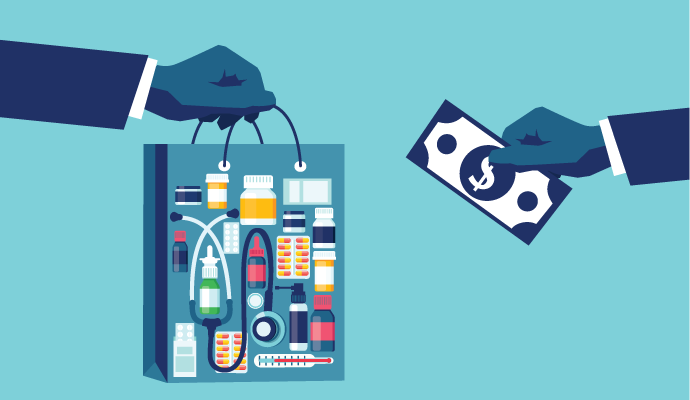New Study Finds Significant Cost Savings from Biosimilars Use
The study found that biosimilars could save companies over $1.53 million and expanding the biosimilar market can ensure employers can access to affordable medicines.

Source: Thinkstock
- When matched for all characteristics, two biosimilars showed significant cost savings for large US employers, according to researchers from the Bloomberg School of Public Health at Johns Hopkins University.
The study, Biosimilar Medications- Savings Opportunities for Large Employers, found that two biosimilars, infliximab and filgrastim, represented 68 percent of the price of the biologic for infliximab and 74 percent of the price of the biologic for filgrastim.
The study was released by The ERISA Industry Committee (ERIC) as part of a larger initiative that examines the impact of biosimilars on the health benefits spending of 13 large employers. It found that the participating companies would have saved an average of $1.53 million on infliximab alone, under the assumption of 100 percent biosimilar uptake.
“It was important for ERIC to lead this initiative because our member companies – the nation’s largest employers – want to ensure that as plan sponsors, their employees and families have access to quality medicine at affordable costs. But as prescription drug costs rise, employees are seeing an increased burden of out-of-pocket expenditures for the medications they and their families depend on – biosimilars offer a solution,” Annette Guarisco Fildes, president and CEO of ERIC, said in the study.
Additionally, biosimilars created savings for employees and their families. Patients who took the biosimilar paid on average 12 percent ($300) and 45 percent ($600) less out of pocket than those who took the biologics, infliximab and filgrastim, respectively.
Mariana Socal, MD, PhD, one of the study researchers, emphasized that the study findings showed that biosimilars can generate significant savings for employers and employees when available. Greater savings could also be achieved if there were more biosimilars on the market and a higher rate of utilization of these medications.
“At ERIC, we believe that obtaining both more biosimilars and better uptake is a shared responsibility,” said Fildes. “Large employers we represent can employ plan design and benefits strategies to help promote the utilization of biosimilars. But when it comes to the availability of more biosimilars on the market, we need federal and state governments to act.”
According to ERIC, biosimilars are newer, similar versions of complex medicines approved by FDA as equivalent therapies. They are offered at a lower price and offer competition to the biologic market. Employer groups recently reported that specialty drugs, including biologics, accounted for less than one percent of prescriptions but made up 40 percent of the group’s total drug spending.
The study was released in conjunction with the tenth anniversary of the March 2010 passage of the Biologics Price Competition and Innovation Act (BPCIA), part of the Affordable Care Act (ACA), which created a pathway for biosimilar approval.
Specialty drug costs, such as biosimilars, have continued to increase over the years, growing from 25 percent of total drug spend in 2010 to 47.7 percent of all spending on prescription drugs, according to the latest Express Scripts analysis. Biologics spending accounted for 93 percent of growth in net drug spending from 2014-2017.
Biologics are becoming increasingly popular in the healthcare space and is one of the fastest growing therapeutic compounds because they promise affordable treatments for a range of conditions. But ten years after the pathway was created, only two biologics face legitimate biosimilar competition.
In mid-February, FDA published a final rule and additional resources to provide useful information to healthcare providers to ensure regulatory transition of insulin products and biologics.
The final rule amends the FDA’s previous definition of the term biological products to expedite the smooth regulatory transition of insulin and potentially lead to reduced drug costs and increased market access.
The balance of innovation and competition boosts the development and approval of biosimilar and interchangeable products and increases market access to ensure patients have more affordable drug options.
To further examine the expanding access to and availability of biosimilars, ERIC commissioned two additional reports.
First, leading consulting firm Segal released recommendations for employers to use in their plan design to speed up the uptake of biosimilars:
- Drive understanding of biosimilars by health plan participants and healthcare providers through education and incentives
- Apply clinical management techniques to improve healthcare quality while lowering costs, through prior authorization, step therapy, and medical channel management
- Include biosimilars in the payment provisions of prescription drug benefits through plan design and pharmacy benefit manager (PBM) formulary strategies
- Address biosimilar medicines when negotiating PBM contracts
Secondly, Fidelity Investments assembled an accounting of legislative and regulatory options that have been proposed by federal and state policymakers, administration officials, and interest groups which details policies that can create a beneficial environment for a competitive biologic marketplace. This can lead to more affordable options for employers and patients.
